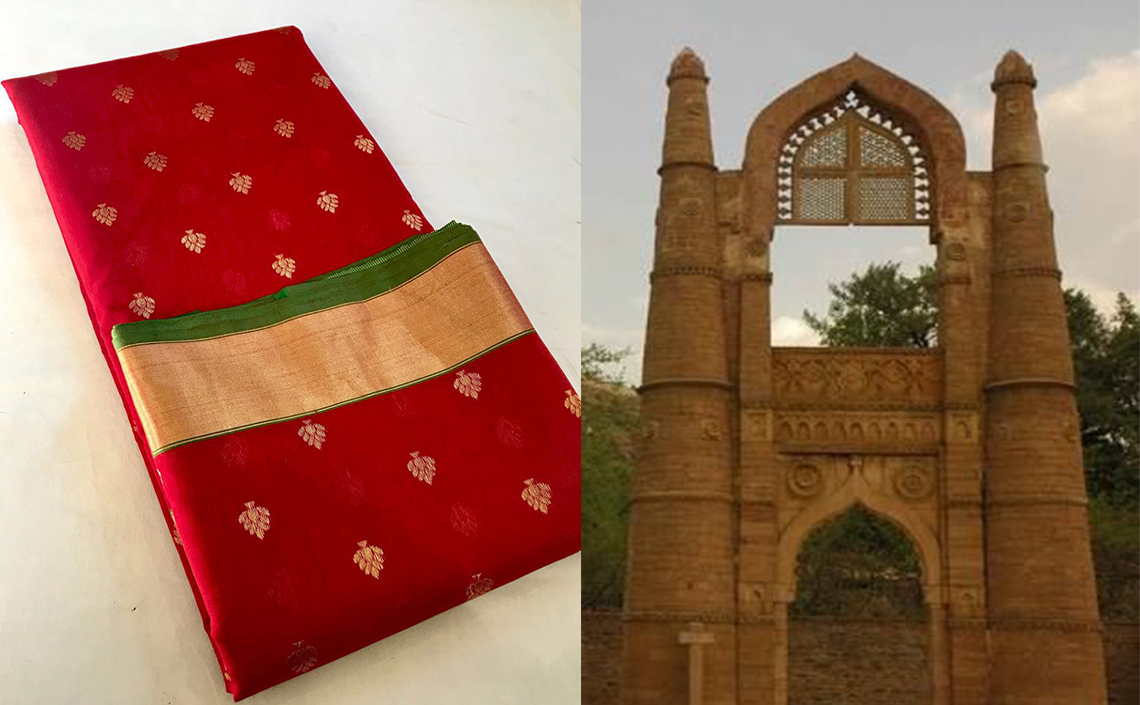Chanderi: A Place for Explorers

Chanderi is a small historical town in Ashok Nagar district of Madhya Pradesh, close to Gwalior& Shvipuri and not very far from Delhi. It is located on the Vindhyachal ranges surrounded by beautiful rivulets, lakes, hills and dense forest. At a 19 km distance from present Chanderi town another interesting tourist place the Buddhi (old) Chanderi is locatedon the banks of Urvashi river.
It is place of kaleidoscopic movement and activity due to its strategic location.Chanderi emerges asan important military outpost and trade centreof ancient and medieval times. Chanderi rose as an important nodal urban centre on the trade route connecting Malwa, Mewar, and central India enroute to Gujrat ports from 11th century onwards.It was an impressive urban centre of medieval central India. Ain-e-Akbari, the autobiography of Akbar refers to Chanderi as a city with 14000 stone houses, 384 markets, 360 spacious caravan sarais (resting places) and 12,000 mosques.
Chanderi surfaces in historical chronicles time and again from Sultanate period, toMughals, to Rajputs, to Marathas,in 1857 revolt,againto Marathas,to Madhya Bharat and finally merged in to Madhya Pradesh in 1956.
There are several Hindu, Jain and Islamic historical, cultural & religious monuments in Chanderi like Koshak Mahal, Jami Masjid, Bawari masjid, Parmeshwar Tal, Badal Mahal, ShahzadiKaRoza, ,Bawari masjid, BattisiBavdi, Kati ghati, Shri Choubeesee Bara Mandir, JankiNath temple, Malan Kho, ASI Chanderi museum, Cenotaph of Baiju Bawara and Jaageshwari temple.The fair of Jaageshwari Devi is hosted here annually.
It is also an important Jain pilgrimage centre. It has many Jain temples, caves and cultural centres likeShri Khandargiri Jain temple ,Shri Thobonji Jain temple ,Shri Chandraprabhadigambar Jain temple,Gurilagiri, Aamanachar, Bithala, Bhamon, Khandargiri, Thuvanji and Bhiyadant, and Deogarh in UP (just 20 KM away) with in Chanderi and Budhi Chanderi region. These Jain temples built in 9th and 10th century have idols of 24 Jain Thirthankaras includingAdinath, Parashshnath and Rishabhnath. These Jain temples attract thousands of Jain tourist and pilgrims.
Chanderi is also arenowned centre for its Chanderi saris and textiles. The famous weaving tradition started during 2nd to 7thcentury AD. During the Mughal period, the textile business of Chanderi moved to its peak.Here, the weavers use silk and cotton to create dazzling weaves in subtle hues, distinguished by beautiful borders, peacocks,geometrics, gold checks, coins and lotus roundels (buttis). Chanderi saris have an exclusive sophistication hard to match in pure silk, cotton and silk-cotton. They appear like dreams woven in textile.
Houses of weavers with long floor touching windows(so they can see the lanes while weaving and for natural light)is a unique feature of medieval era Indian towns, a site to behold and a lesson in house designing.Along with textile weaving centres, other traditional craft units (both private and government) of bamboo weaving, stone cutting and pottery are also operational here.
Chanderi is a place for historical, religious, cultural, and handicraft tourism in central India. A place mustvisiting forexplorers-tourists.
